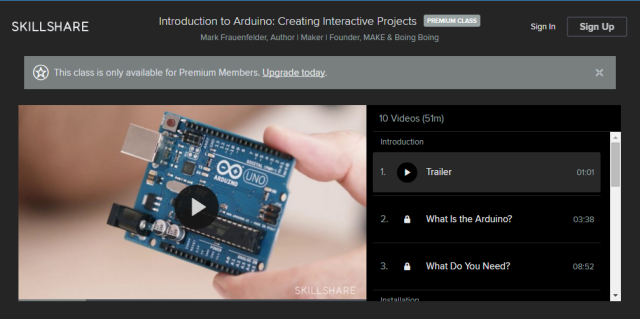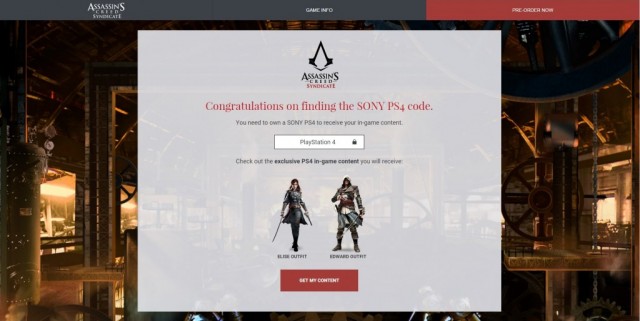

The path that EA Sports UFC has taken to release has not been a smooth one; when UFC President Dana White sought to launch a partnership with EA’s sports simulation studios, he didn’t like the response given. That led to the creation of THQ’s Undisputed series, followed soon after (once mixed martial arts had broken into the mainstream) by EA Sports MMA. THQ’s bankruptcy may have been what brought the two companies together, but you won’t find any harsh words these days. And now that EA Sports UFC has arrived, it’s clear the partnership will be best for both sides.
EA made it clear that their past hesitance surrounding the UFC name was no longer an issue when they showcased the game back at E3 2013, naming it not just one of the company’s next-gen-only titles, but among the first to be powered by the Ignite Engine.
And from the game’s first moments, there is no doubt that the next-gen visuals and character models are easily the most sophisticated that MMA enthusiasts have been able to enjoy on home consoles.
Across all of EA Sports‘ franchises, the lines between video game and real-world presentation are continually being blurred. That means UFC gets a chance to stand out from the crowd with its own Career Mode, entering players into a season of The Ultimate Fighter, competing for a professional contract and a chance to take on the reigning kings of the octagon.
Whether players decide to craft their custom fighter inside the ring, or outside of it in training, the game lives and breathes on the actual gameplay. The next-gen skin textures, blood spatter, cinematic introductions and presentation is all well and good, but the longevity of the franchise rests in the gameplay of combat itself. And from the time the first punch is thrown, it’s evident that EA Sports has gotten more right than wrong with their first adaptation of UFC’s license.
Each match begins with striking, and the mandatory tutorial that welcomes each new player emphasizes that kicks and punches are as important a tool as any other that may be learned throughout training. Gone are any signs that Fight Night‘s DNA is lurking just below the surface, with the controller’s face buttons mapped to one corresponding fist or leg. From there, an endless selection of modifiers – from shoulder buttons, to triggers, and directions on the analog stick – unlock a wide variety of strikes.
It’s UFC‘s stand-up gameplay that is most easily commended, as the smooth animations, impacts, reactions, and footwork all exemplify a depth of gameplay that proves this game is not a standard ‘fighter.’ And as one fighter’s Stamina bar empties with wild punches or kicks, while their opponent merely bides their time, it’s apparent that button-mashing isn’t a path to success this time around.
Like the real world, every attack carries a tradeoff for the fighter launching it; small strikes are less dangerous, but can add up over the course of a fight, where aggressive (or flying) attacks expend energy, and are easily blocked, but may prove worthwhile one out of a hundred times. But when real world fighters leave their feet, the struggle becomes a messier, riskier, but potentially even more memorable beast altogether. And the gameplay of UFC changes to match.
Takedowns, like much of the game’s moves beyond simple striking, is achieved primarily through the use of the right analog stick. By wielding it smartly, players can engage in grappling, wrestle for a dominant position, or grab hold of their opponents legs and drive them to the mat. Once down, players will get to witness what is sure to be both EA Sports’ most divisive facet of gameplay, and the clearest sign that the developers are attempting to simulate MMA in better ways.
quarter-turns of the stick maneuver fighters into position, working (for instance) from half-guard, to side control, and onto a full mount. Some might find such a clinical and explicit step-by-step process antithetical to a sport as fast-paced and furious as mixed martial arts, but just as many will appreciate the dip in pace; players, like fighters, must think their way through an attack, not blindly rush for success.
Once the player is in position – having softened up their opponent with ground strikes or body shots – a submission can be performed. Every bit as vital to an MMA fight as striking, attempting a submission in UFC triggers a standalone minigame. A square of four bars appears on screen, with the fighter being submitted attempting to work their way out along any axis. The attacker must counter those attempts when made, and gain ground when their opponent opens themselves up further.
The system is easier to master in practice than it may sound, but represents the clearest departure from the ‘simulation’ mentality. There’s no question that the need to slowly out-think, out-maneuver, and out-work an opponent captures some of the sport in a minigame that is entertaining on its own, but the abstract relationship to what’s shown on screen is something EA Sports will need to work on in future installments.
Although the gameplay may inspire or succeed to varying degrees across the board, the ultimate goal is intended to capture the changing paces of a UFC fight, and reward both the aggressive striker and the tactical strategist. Unfortunately, the game surrounding those fights is not nearly as polished, or easy to overlook.
Lengthy loading times are one area that game developers are always seeking to eliminate, and UFC comes encumbered with a lot – a lot – of loading screens and waiting times that seem hard to justify. A need to load in assets or the full body deformation of the fighter models is easy to understand, but a 20-30 second wait time to access a training mode, followed by 30-60 seconds of actual training, capped off with yet another half-minute waiting time adds up fast.
Since the training sessions themselves are less helpful than expected (usually requiring players complete a list of attacks without any insight into when, or where to use them), even patient players will find themselves skipping the sessions altogether. But then there are still the larger loading screens to endure, and while they may be filled with words of wisdom like “be like water,” or “an opponent’s full guard is a dangerous place for submissions,” we’d sooner just move onto the next stage.
It was obviously EA and UFC’s goal to give fans of the sport a video game franchise that encapsulated all their was to love about it. EA Sports UFC is absolutely that, even if all aspects of the sport are not adapted equally.
There is still work to be done both in and out of the actual fights, but this is one game every UFC fan will enjoy; after all, nothing compares to knocking your best friend out cold to the elated screams of commentators Joe Rogan and Mike Goldberg – let alone adding your name to the UFC’s Hall of Fame.
__________
EA Sports UFC is available now for the PS4 and Xbox One. We played it on the Xbox One.
Follow Andrew on Twitter @andrew_dyce.



